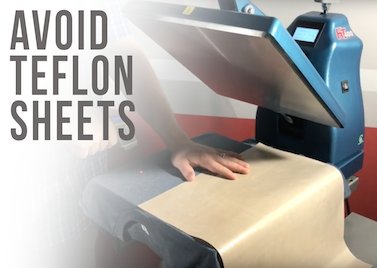Your heat press may have come with a teflon sheet. Another supplier of heat applied graphic suggests that you use a teflon sheet. So why does F&M recommend that we avoid using teflon cover sheets during application?
Teflon acts as an insulator that limits the transfer of energy (heat) from your heat platen of your press to the plastisol ink of your transfer. Our screen printed heat transfers are designed to apply in just 7 seconds using just our transfer without any additional cover sheets. Adding teflon (or other covers) can limit the transfer of heat. With a fast 7 second application, there simply isn't enough time to for the heat to pass through the teflon sheet through to your transfer.
Some heat applied graphics like vinyl or film may recommended that you use a teflon cover during application to protect the image. This is usually because those materials do not have a cover sheet to protect the graphic from sticking to your heat platen. You'll also notice that many vinyl/film products have longer application times. Our products are not vinyl or film, but rather screen printing using plastisol ink onto a transfer paper. The paper we print on serves as an adequate cover to protect the graphic from sticking to your heat platen.
In the video below we show you how a teflon sheet can impact your application.

